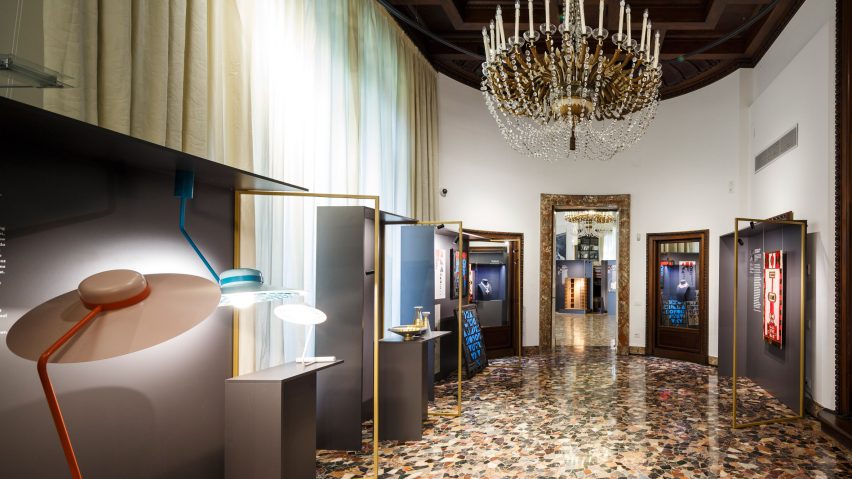
Designers team up with Italian master artisans to create "craft design" objects
Designers including India Mahdavi, Nathalie du Pasquier and Ini Archibong have worked with Italian master artisans to create a range of unique objects, including totem-like vases and contemporary Venetian masks.
Thirteen international designers were invited to participate in Doppia Firma – meaning Double Signature in Italian – which is a Milan design week exhibition that pairs contemporary designers with master artisans from Venice and the Veneto region.
The results were presented during Milan design week in an exhibition at Villa Mozart, a 1930s building that is usually inaccessible to the public.
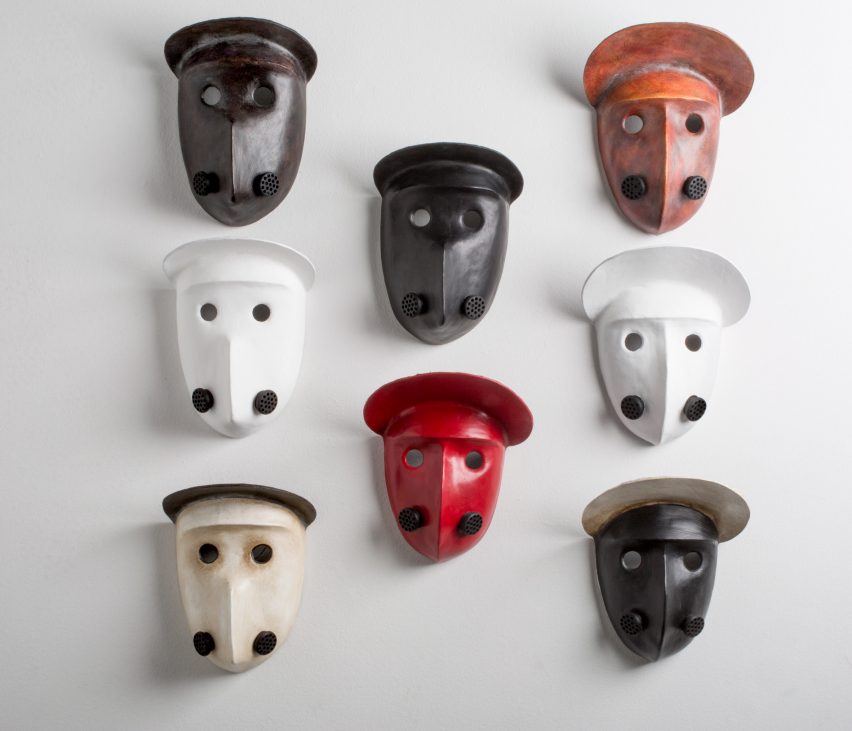
Now in its third edition, the project was conceived by the Cologni Foundation for the Métiers d’Art, developed with interiors magazine Living, and presented by The Michelangelo Foundation for Creativity and Craftsmanship.
This year's show featured a wide spectrum of Venetian crafts, in glass, ceramics, porcelain, marble, gold leaf, wood, lace, brocade, silver, silkscreen printing and spinning.
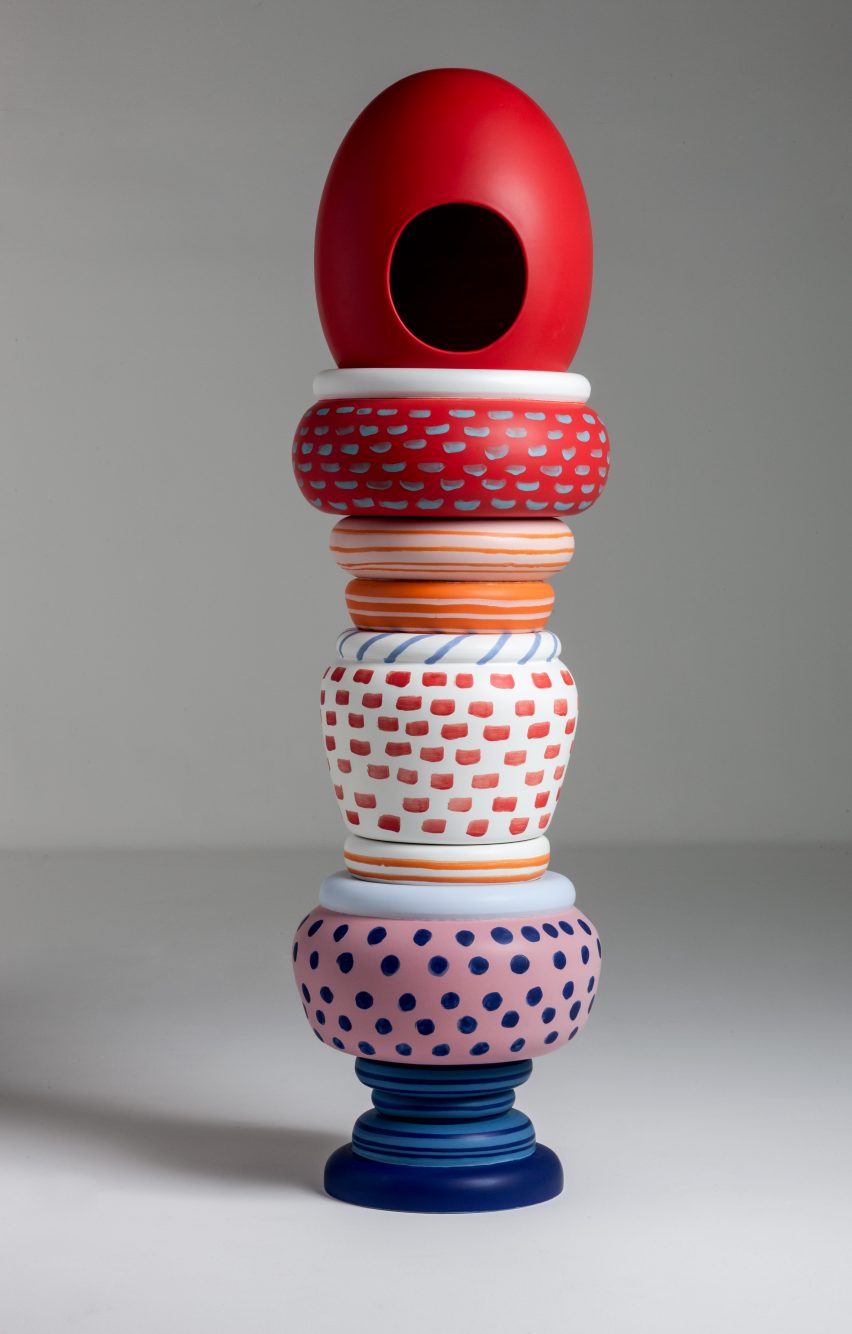
"The project offers master artisans the possibility to explore new realms of expression, while designers have the opportunity to interact with new techniques, materials and practices," said the organisers in a statement.
Each object on display is accompanied by photos and videos illustrating each step of the process, underlining the contribution of both its creators.
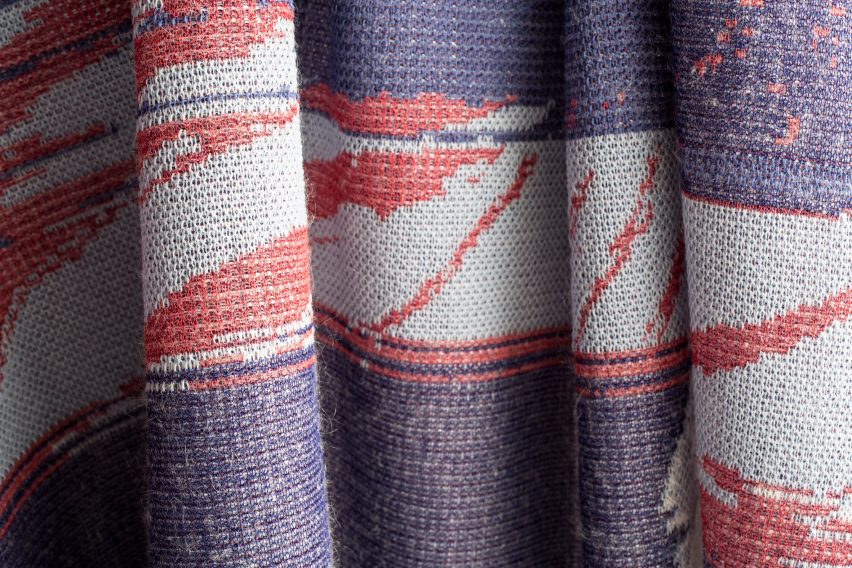
Works include a series of textiles designed using algorithms by American designer Ini Archibong, which were woven by Elisabetta Bocchese at the Miles knitwear company. Archibong also created a series of small, ceiling-hung lamps with ceramic shades covered in warp-knitted fabric.
Beirut-based designers David/Nicolas created a two-tone inlaid cabinet together with artisans Giorgio and Alessandro Morelato. Featuring 82 alternating strips of oak and mahogany applied to curved plywood, the cabinet is made using traditional techniques.
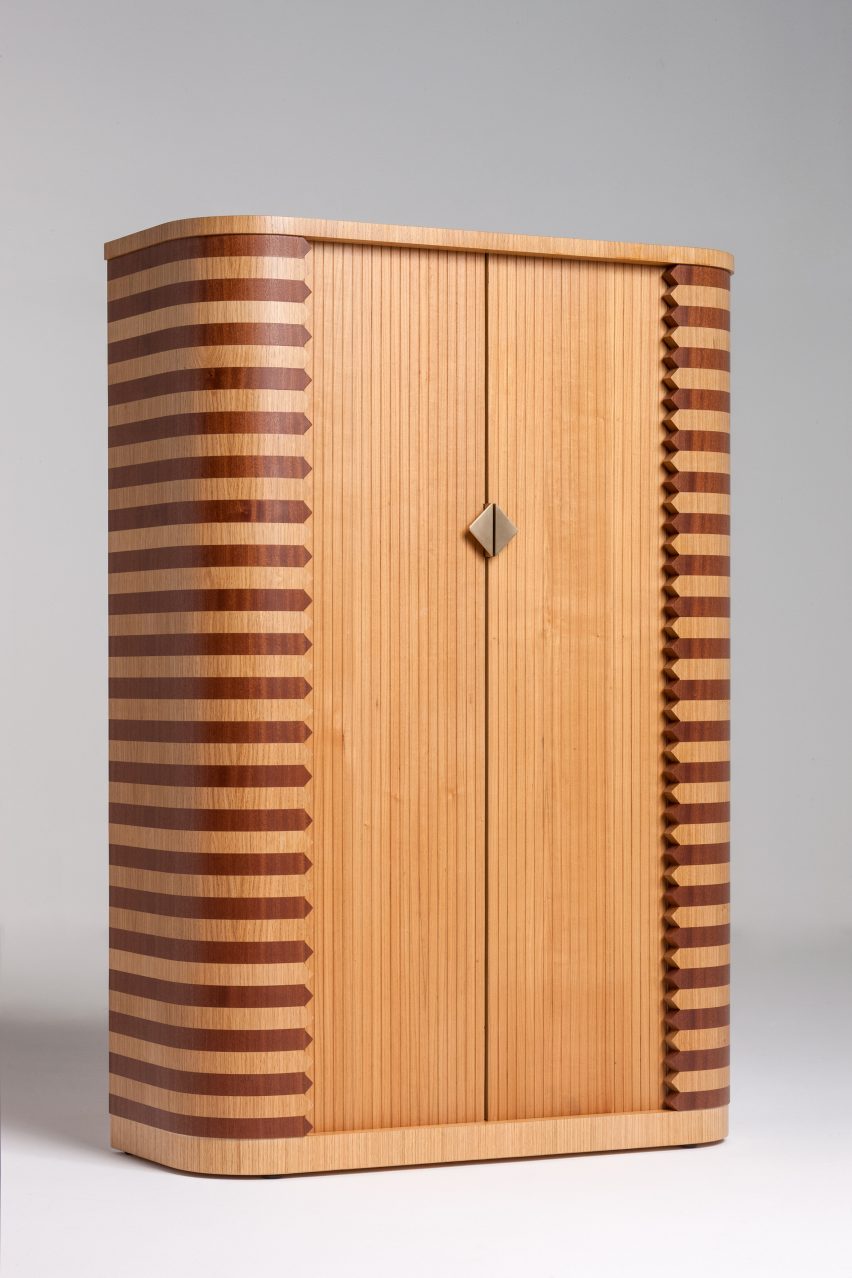
Inspired by London and Venice's foggy weather, London studio De Allegri and Fogale worked with Andrea Zilo of Murano glassworks Anfora to create six hand blown goblets, a plate and a carafe made using old-fashioned glass decoration such as filigrana (canes of clear glass with a stripe of colour inside), macchie di colore (coloured spots) and iridazione (smoke applied during the molten phase to obtain an opaque, iridescent surface).
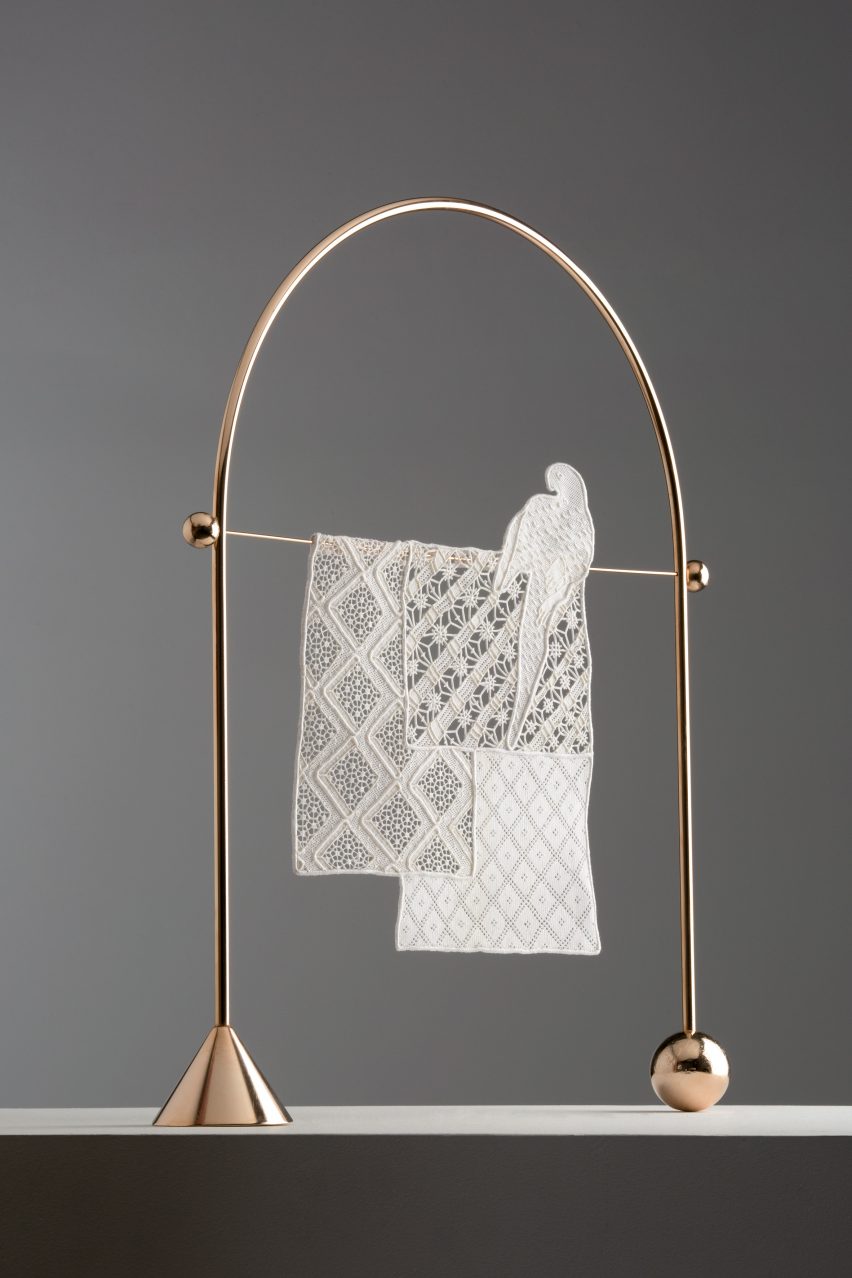
Nathalie du Pasquier worked with Emanuele Bevilacqua of Tessitura Luigi Bevikacqua at his family-run weaving company to create a cotton and silk tuft weaving that was hand-woven on an original 18th-century loom.
India Mahdavi was paired with lacemaker Lucia Costantini to create a white Burano lace design inspired by the narrow Venetian streets where clothes are pegged out to dry between buildings. Mahdavi also included a parakeet in the design, which is made using intricate ricci d'angelo and Venezia needlepoints.

German graphic designer Erik Spiekermann created a woodblock type in collaboration with typographer Silvio Antiga of Grafiche Antiga, while together with master goldsmith Giampaolo Babetto, Studio Swine designed a three-piece brushed silver condiment set based on architectural elements.
A totem made up of ceramic vessels is the work of Barcelona-based designer Pepa Reverter together with Mario Bertolin of Ceramiche Artistiche 3B, which specialises in the turning of unglazed fired biscuit earthenware.
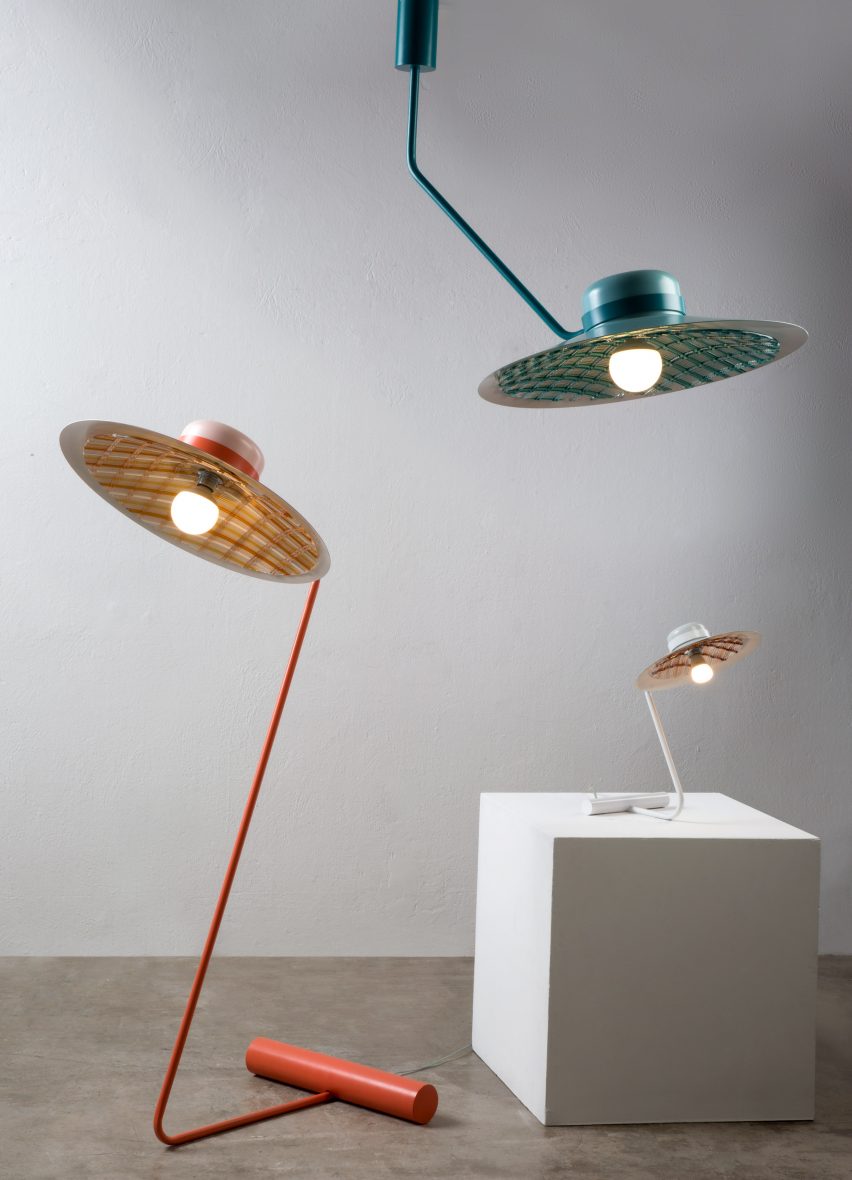
A series of three lamps inspired by the city of Venice and made from fused Murano glass canes and painted metal are the work of Milanese designer Serena Confalonieri and glassmaker Francesca Merciari of Abate Zanetti.
French designer Philippe Tabet made new interpretations of traditional papier mâché Venetian masks with Sergio Boldrin of La Bottega dei Mascarei, who has been making masks for 40 years.
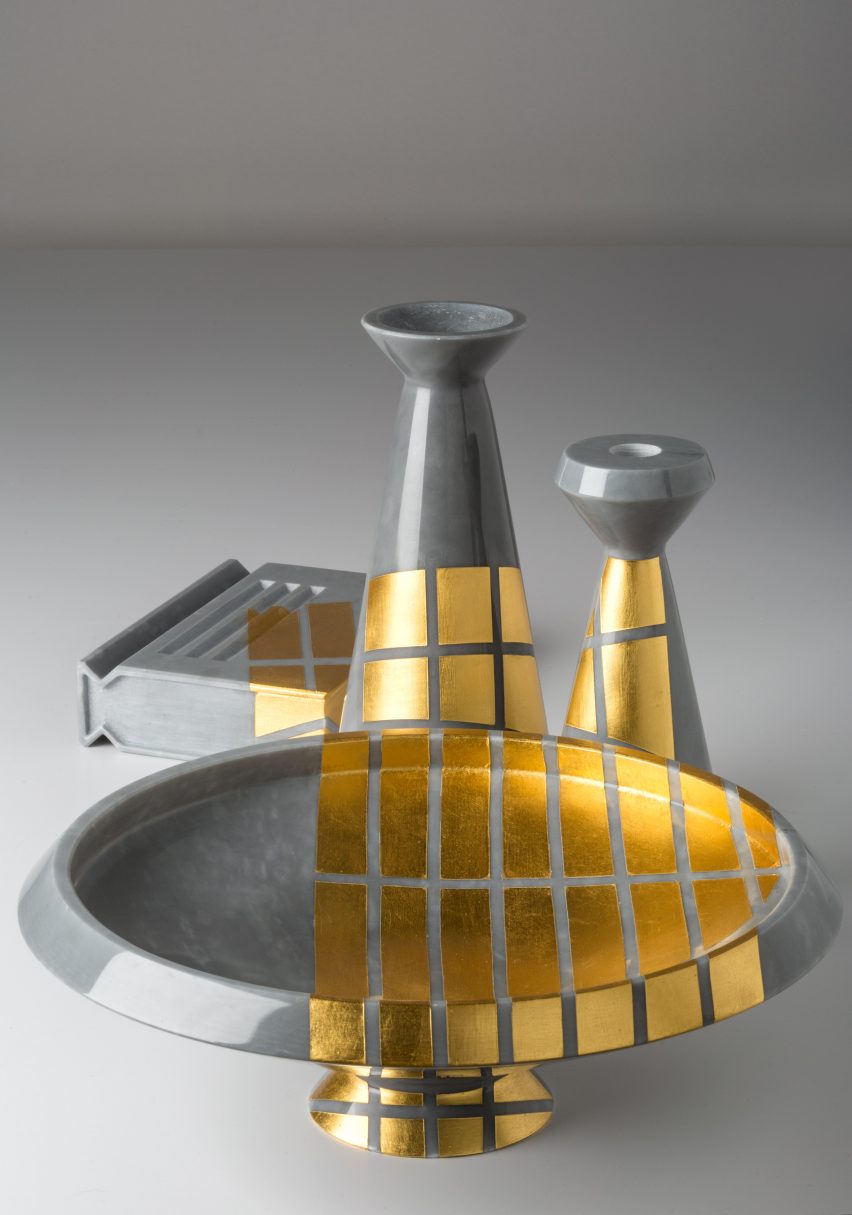
Dutch designer Kiki van Eijk created a set of gilded marble tabletop objects decorated with a gold leaf pattern inspired by the light cast through window panes. To apply the gold leaf, Van Eijk worked with gold-leaf artisan Marino Menegazzo in Venice.
Five water-based ink screen prints on handmade Italian paper were created by screen printer Gianpaolo Fallani in collaboration with Italian jeweller Giampiero Bodino, whose studio is based in Villa Mozart, where the exhibtion is being staged.
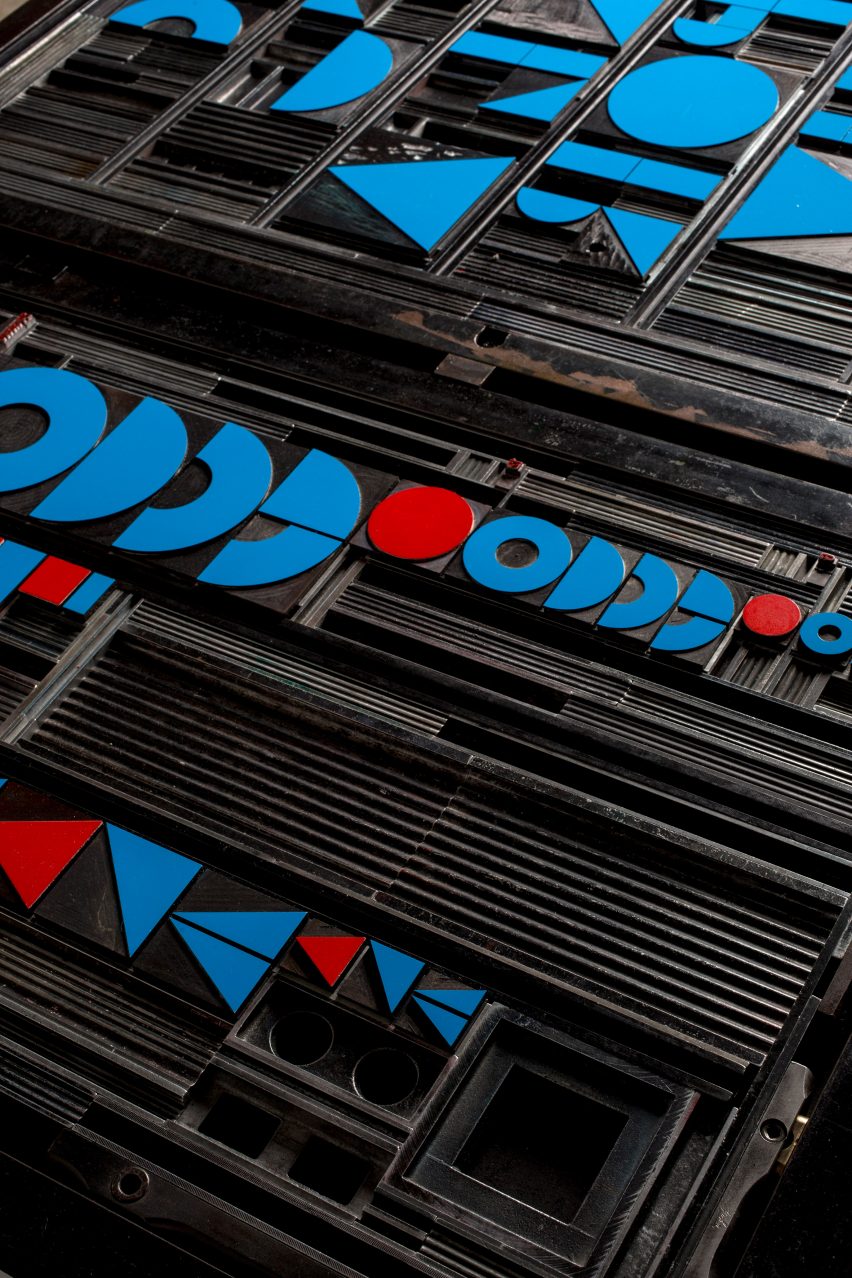
The Doppia Firma exhibtion offers an early preview of one of the 16 displays that will comprise Homo Faber: Crafting a More Human Future – a major exhibition that the Michelangelo Foundation will present in Venice this September, in the spaces of Fondazione Giorgio Cini on the island of San Giorgio Maggiore.
The exhibition has been developed in partnership with the Cologni Foundation for the Métiers d’Art, Fondazione Giorgio Cini, Fondation Bettencourt Schueller and the Design Museum of the Milan Triennale and will run from 14 to 30 September 2018.
Doppia Firma was on show from 17 to 22 April 2018.